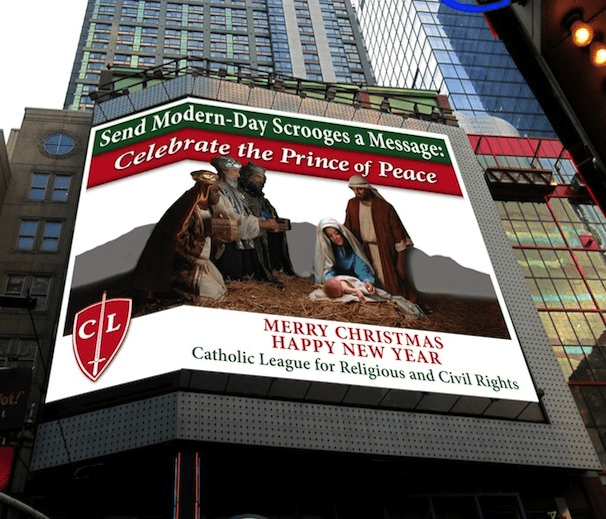Rick Hinshaw
George Weigel, Roman Pilgrimage: The Station Churches, with Elizabeth Lev and Stephen Weigel (New York: Basic Books, 2013)
When I read Witness to Hope, George Weigel’s seminal biography on Pope John Paul II, I found I could only absorb it a few pages at a time. So steeped was it in probing the essence of the Holy Father – his faith and spirituality, his theology, philosophy, his understanding of the world – historically, currently, and into the future – that I soon realized if I tried to read it quickly, like a normal historical biography, I would miss so much of what it had to offer. By taking it slowly, I was better able to discern the breadth and depth of Pope John Paul’s teachings, and deepen my own faith and spirituality in the process.
Weigel’s latest book, Roman Pilgrimage: The Station Churches, is actually designed to be read a few pages at a time, as it takes us, day-by-day in very short chapters, through an entire Lenten pilgrimage to the station churches in Rome – and once again, I found myself coming away from each short reading with some new or deepened knowledge of some aspect of the faith, and some renewed spiritual insights and inspiration.
The author sets out for us an “itinerary of conversion” in which the “ancient penitential season that precedes Easter” is joined to “the rediscovery of the baptismal character of Lent,” which he credits in large part to “Pope Pius XII’s restoration of the Easter vigil and the liturgical reforms mandated by the Second Vatican Council.” The penitential “disciplines” of Lent – fasting, almsgiving, intensified prayer – are properly understood, Weigel explains, as an opportunity for the “continuing conversion” to which every baptized Christian is called, and through which we are given the graces to evangelize the faith to others.
Along this pilgrimage, Weigel takes us on a number of different journeys simultaneously.
He takes us through the histories: of the concept of pilgrimage itself, from ancient and Old Testament times to Christian Holy Land pilgrimages that grew during Constantine’s rule; of the practice of visiting and praying at the tombs of martyrs that in the early fourth century grew into Lenten pilgrimages to churches built above or around those tombs, and then became formalized as station church pilgrimages led during Lent by the Bishop of Rome; of the decline of the practice, for a variety of reasons, in the early part of the second millennium; and of its resurgence in the 20th century, for which “the greatest impetus” came from American seminarians and student priests studying at the Pontifical North American College in Rome, who began such a daily Lenten pilgrimage in the mid-1970s, and by the turn of the century were attracting “hundreds of English-speakers from Rome’s universities, diplomatic posts and Anglophone seminaries” to join with them.
He takes us—brilliantly assisted by the photography of Stephen Weigel and the artistic, architectural and historical descriptions of art historian Elizabeth Lev—into each station church, sharing with us their physical magnificence, their rich and sometimes turbulent histories, and the unique spiritual significance of each of them, that integrate together to provide the journey of conversion that is this Lenten pilgrimage.
In each church, Weigel takes us through that particular day of Lent – its Mass and readings, the office of readings for the day, the saint whose feast day it is – and intertwines them with the spiritual and faith-historical significance of that day’s particular station church.
For example, on the Wednesday of Holy Week, “as the forces of darkness are closing in” on Jesus, “the Lenten pilgrim’s attention is naturally drawn to Mary’s ‘second fiat‘: the inarticulate, silent fiat at the foot of the cross.” And so the pilgrimage that day is to the Basilica of St. Mary Major, and leads also to reflection on the “notable developments of Marian doctrine in the Catholic Church” that “deepen our understanding of the mystery of Christ and of the mystery of the Church.”
At the book’s outset, Weigel tells us that “The station church pilgrimage can be, and in fact is, walked on many levels.” So too, this book can be read – and can be enlightening and fulfilling—on many levels: spiritual, historical, cultural, aesthetic, to name just a few. What makes it most compelling, however, is how the reader is transformed from a kind of outside observer of these phenomena, to an active participant in the spiritual pilgrimage being taken here. This Weigel does by drawing us into contemplation on how we can – and should – apply each day’s pilgrimage experience to our current times – in our individual lives, but also in our call to evangelize the Gospel in the modern world – as part of our own Lenten itinerary of conversion.
For example, reflecting on the reading from Exodus for the second Monday of Lent, in which the fleeing Israelites fear they are about to be overtaken by the pursuing Egyptians, “Moses,” Weigel writes, “responds as Jesus did (in the previous day’s Gospel) to the terrified disciples who hid from his glory” in the Transfiguration: “Be not afraid”; or, “as one translation has it, ‘Fear not, stand firm. And see the salvation of the Lord.'”
In America today, we know that we too are called to “stand firm” against forces hostile to our faith, who seem to grow ever more aggressive in their attacks not only on our beliefs, but on our right to act on or even express those beliefs in the public square; and, increasingly, on our right to even live those beliefs in our own lives, free of government imposition.
But Weigel also reflected on how “the call to ‘stand fast’ can inspire an examination of conscience on a far more mundane challenge: our response to petty aggravation or general obnoxiousness.”
That resonated with me as I thought back to the guidance a priest gave me some years ago, when I shared with him how sinful feelings of anger and hostility, over what I perceived as an injustice being done to me and to others, were getting the better of me. He advised me to spend some time in front of the first station of the cross, where Jesus stands before Pilate and is condemned to death, and to meditate on our Lord’s humble acceptance of that greatest act of injustice in the history of the world. The priest wasn’t dismissing my sense of injustice; he was helping me to respond to it with humility rather than anger, by following our Lord’s example, reflecting on my own sinfulness, and “standing fast” against overreaction on my part to a comparatively minor grievance. Excellent guidance to follow any time, but particularly during Lent, as we meditate on Christ’s suffering and death in reparation for our sins.
On Thursday of the first week of Lent, Weigel uses the Gospel from Matthew (“Seek and you shall find. Knock and it shall be opened to you…”) to reflect on what he terms “arguably the characteristic spiritual malady of the twenty-first-century Western world”: “acedia,” which he defines as “the kind of world-weariness that comes, not from spiritual detachment, but from boredom: a lack of interest in life born of cynicism.”
“Given the pervasive cynicism in postmodern Western culture,” he writes, “the milder forms of acedia are a perennial temptation, surrender to which is a point on which consciences might well be examined in this first stage of the Forty Days.” Those who do so, he suggests, will find the answer in the “divine generosity” that Jesus offers in the Gospel reading from Matthew.
Weigel takes us through Holy Week, through what he aptly terms “the ultimate pilgrimage”: our Lord’s passion, death, and Easter Sunday Resurrection. The station church pilgrimage does not end there, however. It continues through Easter Week, the oft-neglected Octave of Easter, “which is really Easter extended for seven more days,” he explains. Noting how Pilate, on handing Jesus over to be crucified, proclaimed sarcastically, “Ecce homo—’Here is the man!'” Weigel writes that throughout the Easter Octave, that is exactly what the Church is proclaiming: that Christ, indeed, is “the man” – “the man in whom the world’s destiny is embodied”; the man “in whom humanity is reborn”, who has “overcome death, trampled the powers of hell underfoot, and restored hope to suffering humanity.”
And all who have completed this pilgrimage—indeed, all who have rediscovered the baptismal character of Lent, and so embarked on the journey of continuing conversion, should now be filled with that hope in Christ, and inspired to share it with a world so desperately in need of it.
This book is certainly a fine tool for embarking on that journey of continuing conversion. Obviously, anyone traveling to Rome should not leave home without it. (It even includes maps by which to locate each of the station churches.) But even for those not able to be physically in Rome, Roman Pilgrimage: The Station Churches is a kind of spiritual travelogue that will take the reader on an inspiring Lenten journey of faith and renewal.
Rick Hinshaw is editor of the Long Island Catholic magazine and former Director of Communications for the Catholic League.

